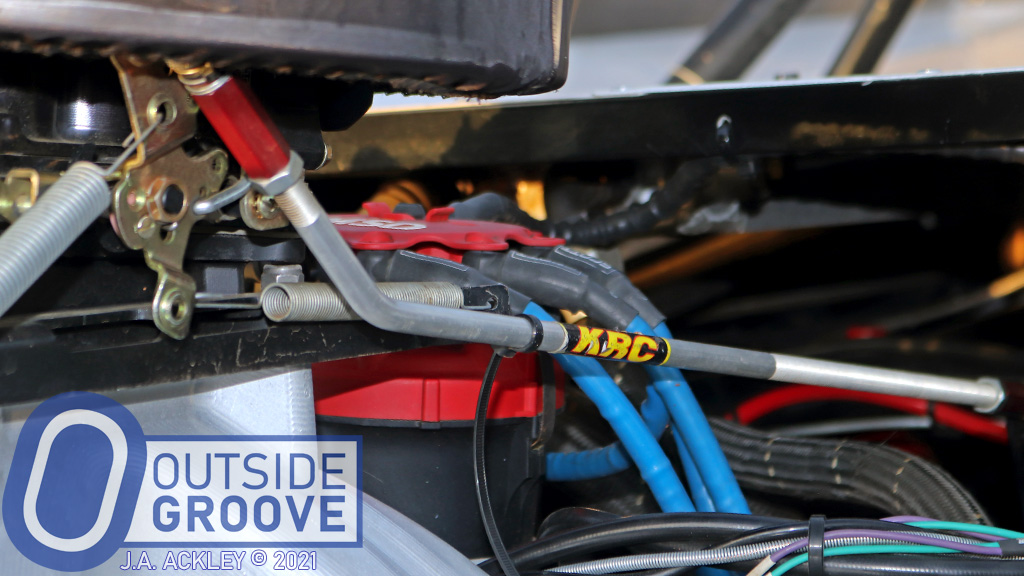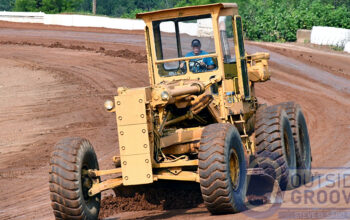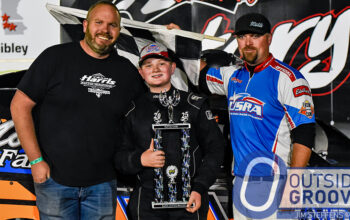Racers can take measures in the shop to prevent stuck throttles. Our panel of experts — Mel Kluhsman, of Kluhsman Racing Components (KRC), Will Krup, of Willy’s Carburetor & Dyno Shop, Bob Oliver, of Competition Carburetion, and Tony Pettinelli, creator of the TIGOR switch — offered their advice on how to avoid the scary situation.
Hood: Under Pressure, Pushing Down on Me
Air pressure, especially on long straightaways, can push down on the hood and, in turn, the air cleaner, which could rub on the carburetor’s throttle linkage. The throttle linkage should have at least 1″ of clearance from the hood and air cleaner throughout its complete arc of rotation, as witnessed by a crew member as the driver presses on the accelerator pedal while in the car. Go even further, and have crew members push down on the hood while another person works the throttle from the cockpit to ensure it moves freely.
— Bob Oliver, Competition Carburetion
Air Cleaner: Too Tight Ain’t Right
Prevent overtightening the air cleaner by using a double nut on the stud, below the air cleaner, to create a positive stop. This is particularly important with plastic air cleaners, which have more give. If you overtighten the bolt, the air cleaner’s lower mount can interfere with the throttle linkage. After installing the air cleaner and double nut, adjust the nut to make sure the linkage still has at least 1” of clearance of the air cleaner as the linkage moves. Then, tighten the top nut on the stud that is pushing down on the air-cleaner cover. It should be tightened just enough so that with two hands it is difficult to rotate the air cleaner assembly.
— Bob Oliver, Competition Carburetion
All Thread is Not All Good
Never use all thread or have any exposed thread through the firewall to link the carburetor to the pedal. Firewalls flex under race conditions. All thread that has plenty of clearance when the car is at rest may still hang up on the edge of the firewall under race conditions.
— Bob Oliver, Competition Carburetion
Clean, Clear Motion
Keep all bolts and rod ends on the throttle linkage rod and the bell crank on the firewall free from dirt. Wipe rod ends and quick-disconnect ends with a light oil or WD-40.
— Mel Kluhsman, Kluhsman Racing Components (KRC)
Put a Stop to Stuck Throttles
A throttle stop on the cockpit-side of the firewall prevents overextending the throttle linkage during the heat of competition. When the carburetor’s butterflies are vertical, there is no advantage to pressing the accelerator pedal any further. The throttle stop prevents damage to the bell crank and throttle cam linkage, and prevents stuck throttles.
— Mel Kluhsman, Kluhsman Racing Components (KRC)
Springs that Swing
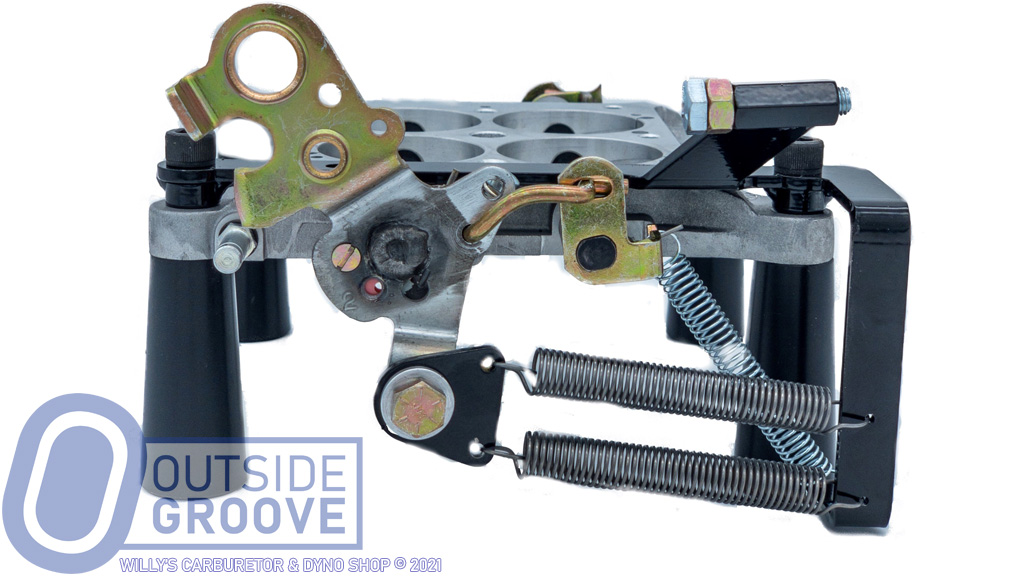
The return springs should move without the springs binding with each other. Willy’s Carburetor & Dyno Shop makes an inexpensive throttle and return kit ($38) for Holley 2bbl and 4bbl carburetors. It has two throttle return springs on the primary throttle shaft and one throttle return spring for the secondary shaft for a 4bbl. Willy’s relocated all the springs for more clearance between them and the air cleaner. Furthermore, the springs are on a swivel hook. This helps maintain the proper linkage and spring geometry no matter what angle the linkage is at. The bracket also features a built-in adjustable throttle stop to prevent the throttle shaft lever from “camming over.” (See “John Newhouse: Wide-Open Flight” for an example of that occurrence.)
— Will Krup, Willy’s Carburetor & Dyno Shop
It’s What a TIGOR Does Best
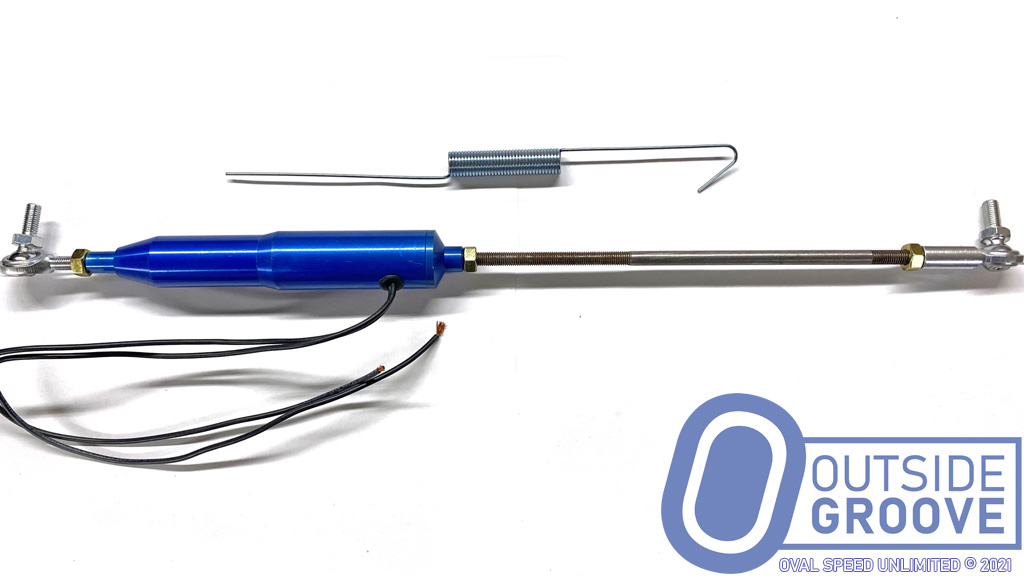
Consider installing the TIGOR switch, sold exclusively through Oval Speed Unlimited. It cuts off the ignition when the driver lifts off the accelerator and the carburetor fails to respond. The TIGOR Switch does not activate when the throttle sticks at the firewall or in the cockpit. It replaces the accelerator rod in the carburetor linkage and connects to the ignition to allow it to cut the ignition off. While the TIGOR switch does not require maintenance, dirt racers must mount it inside the cockpit to protect it from dirt and moisture.
— Tony Pettinelli, TIGOR switch
The Balls That Keep Things Moving
The KRC quick-disconnect throttle kit (KRC-1040) does more than provide a quick way to disconnect the throttle linkage from the carburetor when switching carbs. The company claims the product’s ball assemblies provide a greater range of movement than OEM-style rod ends. More range of movement results in less opportunities for a throttle linkage to bind and create a stuck throttle situation. Note: The KRC-1040 kit cannot be used with a TIGOR switch as both replace the accelerator rod.
— Mel Kluhsman, Kluhsman Racing Components (KRC)
Test Before Racing the Rest
During warm-ups, come off of turn four, and press your foot to the floor. Count one thousand one, one thousand two, and release. If the throttle sticks, there is time to hit the kill switch and coast to the infield. Then, do it one more time coming off the second turn, just to be sure.
— Bob Oliver, Competition Carburetion
Sources
Competition Carburetion
Sun Valley, Nevada
775-331-5609
competitioncarburetion.com
Kluhsman Racing Components
Lockwood, Missouri
800-814-5745
krcracing.com
Oval Speed Unlimited
Massapequa Park, New York
516-541-7920
https://www.facebook.com/Oval-Speed-Unlimited-551295518278724/
Willy’s Carburetor & Dyno Shop
Mount Carmel, Illinois
618-262-8021
willyscarbs.com
Mike Adaskaveg has written hundreds of stories since the website’s inception. This year marks his 54th year of covering auto racing. Adaskaveg got his start working for track photographer Lloyd Burnham at Connecticut’s Stafford Motor Speedway in 1970. Since then, he’s been a columnist, writer, and photographer, in racing and in mainstream media, for several outlets, including the Journal Inquirer, Boston Herald, Stock Car Racing, and Speedway Illustrated. Among Adaskaveg’s many awards are the 1992 Eastern Motorsport Press Association (EMPA) Ace Lane Photographer of the Year and the 2019 National Motorsports Press Association (NMPA) George Cunningham Writer of the Year.

